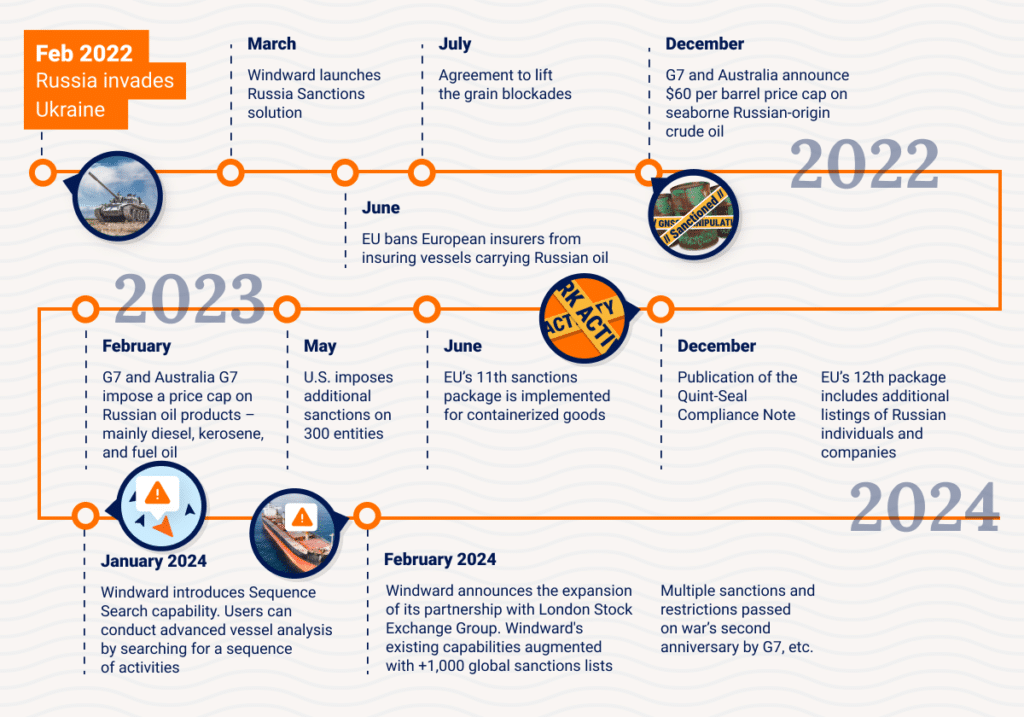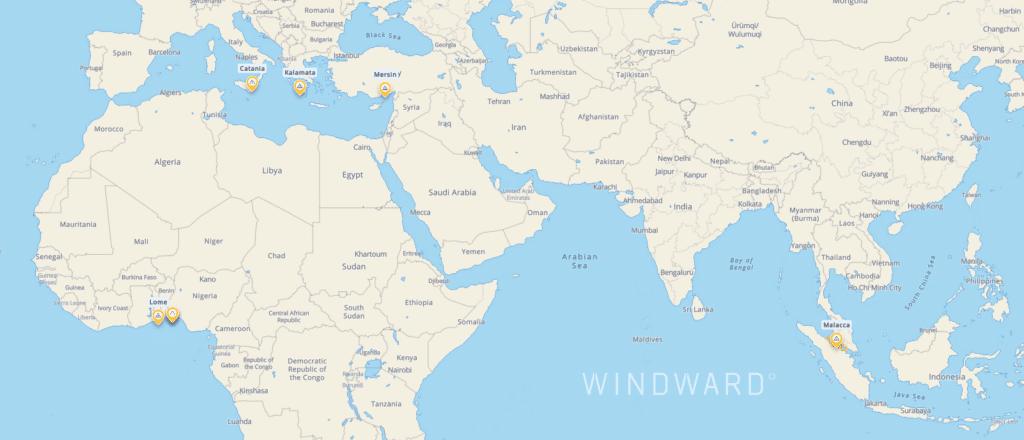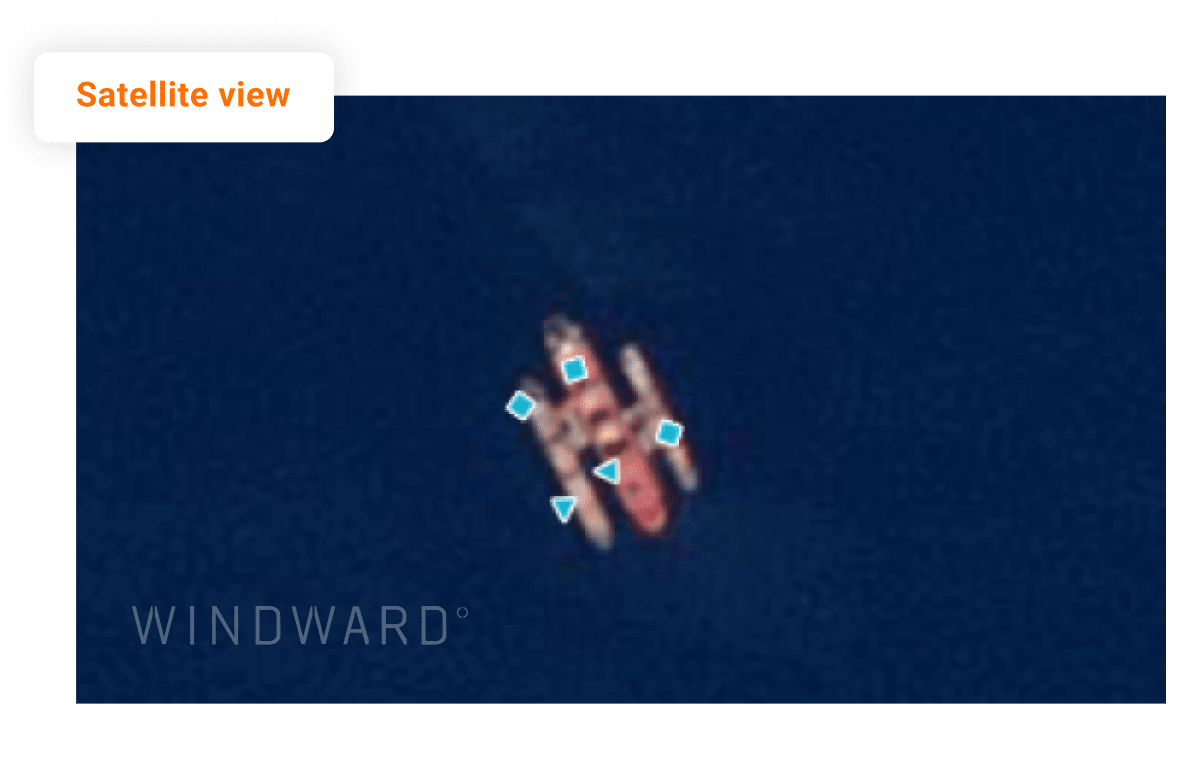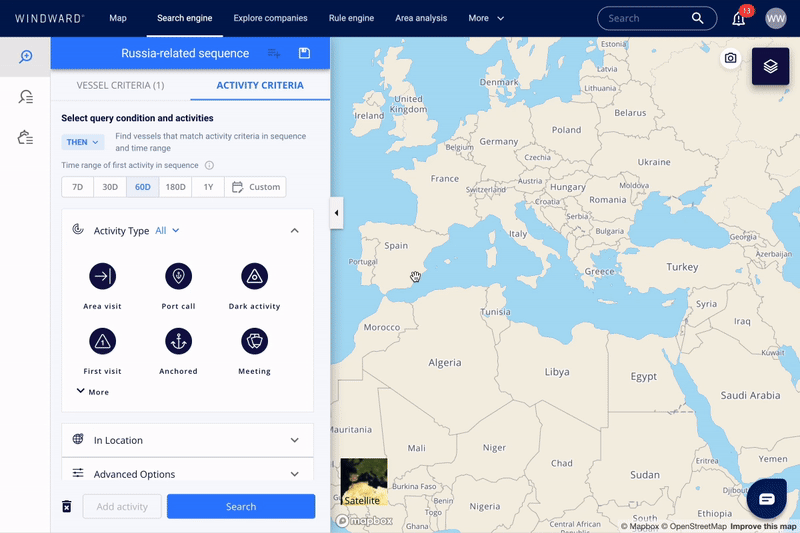Reports
2 Years of Turmoil that Transformed the Maritime Ecosystem

Shadow Fleet and Commodities
Another result of the regulation loopholes was the emergence of the gray and dark fleets, used for smuggling Russian cargo while appearing to be legitimate, or at least trying to evade detection.
Later, the U.S. Office of Foreign Assets Control (OFAC) expanded sanctions to include metals/mining, and grain smuggling. This was the first time sanctions went beyond oil, which was a significant change for dry bulk stakeholders.
DSPs Continued to Rise, Loopholes Were Closed
The EU’s 11th sanctions package went into effect on June 24, 2023. Unsurprisingly, part of the motivation was the sharp rise in DSPs: “Attempts to circumvent Union restrictive measures have resulted in a sharp increase of deceptive practices by vessels transporting Russian crude oil and petroleum products,” the text of the Council decision reads.
Ship-to-ship (STS) transfers, location (GNSS) manipulation, and dark activity were the main behavioral targets, as noted in the Transport Measures section of the package. The EU’s 11th sanctions package also regulated containerized goods.
The timeline section above shows a few of the restrictions that were enacted in the second half of 2023 and the early months of 2024. These measures were almost uniformly about tightening enforcement, closing loopholes, and lasering in on specific bad actors.
China and Russia also seem to have drawn even closer following the outbreak of the war.
There was an 83% increase in the monthly average of container voyages from Russia to China when comparing 2022 to 2023.
The Iran-Russia Trade Trend
An article published in Bloomberg back in December 2022 notes that Russia and Iran are building a trade route to defy sanctions:
“The two countries are spending billions of dollars to speed up delivery of cargos along rivers and railways linked by the Caspian Sea. Ship–tracking data compiled by Bloomberg show dozens of Russian and Iranian vessels – including some that are subject to sanctions – already plying the route.
It’s an example of how great-power competition is rapidly reshaping trade networks in a world economy that looks set to fragment into rival blocs. Russia and Iran, under tremendous pressure from sanctions, are turning toward each other – and they’re both looking eastward, too.”
For our 1-year Russia report, Windward’s Maritime AI™ platform identified an increase in cargo ships engaging in dark activities in the Caspian Sea, with Iran as their next port, and then Russia. Since then the trend continued – there was a 107% increase in the monthly average of this behavior by cargo vessels when comparing 2022 to 2023.

In the summer of 2022, Windward uncovered a disturbing new phenomenon: grain laundering. And STS meetings were a key component.
Mostly Russian-flagged cargo vessels and other ships operating under flags of convenience appeared to be meeting with one to four cargo, service, and crane vessels simultaneously in the Kerch Port offshore waiting area.
Windward discovered previously unreported information on five vessels engaging in dark activities and STS operations in the Kerch Strait in June 2022. This was part of what appeared to be a coordinated effort to launder grain allegedly stolen from Ukraine.

A new trade flow bringing the stolen grain to Syria appears to have been established. There was a 420% increase in dark activities in the Black Sea by bulk carriers flying either the Russian or Syrian flags (comparing 2022 to 2023).

And Windward’s expanded partnership with London Stock Exchange Group (LSEG) will offer users comprehensive compliance and risk management capabilities.
World-Check One data will augment Windward’s existing shipping analytic capabilities with more than 1,000 global sanctions lists streamlining the screening process for onboarding, Know Your Customer (KYC) and third-party risk due diligence.
Organizations can easily remain compliant and help facilitate global trade, while avoiding the reputational and financial harm of sanctions.













